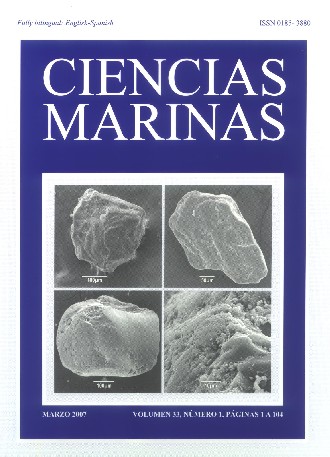Distribution of necrotizing hepatopancreatitis bacterium (NHPB) in cultured white shrimp, Litopenaeus vannamei, from Mexico
Main Article Content
Abstract
This paper describes the first systematic monitoring conducted in 2002 at shrimp farms in Sinaloa and Sonora (Mexico) for the presumptive and confirmative diagnosis of necrotizing hepatopancreatitis bacterium (NHPB) in Litopenaeus vannamei. Light microscopy (wet mounts and hematoxilin-eosin-stained sections of hepatopancreas) showed atrophy of the hepatopancreas, strangulation and necrosis of the hepatopancreatic tubules, with masses of NHPB within the tubular epithelium, hemocytic infiltrates and tubular melanization. The gene encoding the 16S rRNA (16S rDNA) of NHPB was amplified by polymerase chain reaction (PCR) from clinical specimens and the bacteria isolated using Percoll density gradient centrifugation. Negative-stain transmission electron microscopy revealed pleomorphic bacteria, most of them ovoid or rod-shaped (0.2 µm wide and 0.6–0.9 µm long), and a helical form demonstrating seven to twelve spiral turns (0.23 µm wide and 2.43–5.27 µm long). Several severe epizootics of commercially grown L. vannamei occurred during the study period and the mortality was attributed to NHPB infection. Using PCR and microbiological analyses, other etiologic agents, such as white spot syndrome virus, infectious hypodermal and hematopoietic necrosis virus, hepatopancreatic parvovirus and vibriosis, were ruled out as contributory factors.
Downloads
Article Details
This is an open access article distributed under a Creative Commons Attribution 4.0 License, which allows you to share and adapt the work, as long as you give appropriate credit to the original author(s) and the source, provide a link to the Creative Commons license, and indicate if changes were made. Figures, tables and other elements in the article are included in the article’s CC BY 4.0 license, unless otherwise indicated. The journal title is protected by copyrights and not subject to this license. Full license deed can be viewed here.

